Phenom: How did Coco Gauff get so good so fast?
By Steve Tignor Oct 21, 2019Sinner, Alcaraz, Fonseca all won the Next Gen ATP Finals at 18. Will Justin Engel join them?
By TENNIS.com Dec 13, 2025WTA Match of the Year Honorable Mentions: Comebacks, marathons, anti-epics, and Sabalenka on the winning side
By Steve Tignor Dec 13, 2025Garbiñe Muguruza returns to Madrid as co-tournament director
By TENNIS.com Dec 13, 2025Alexandra Eala carries flag for Philippines at 2025 SEA Games
By TENNIS.com Dec 12, 2025Victoria Mboko and Janice Tjen among players honored by ITF for 2025 breakthroughs
By Associated Press Dec 12, 2025WTA Match of the Year, No. 1: Amanda Anisimova comes of age in Aryna Sabalenka Wimbledon stunner
By Steve Tignor Dec 12, 2025WTA Match of the Year, No. 2: Victoria Mboko escaped Elena Rybakina, and drove her home fans berserk, in Montreal Cinderella run
By Steve Tignor Dec 12, 2025Retired Rafael Nadal jokingly "withdraws" from 2026 Australian Open after right hand surgery
By David Kane Dec 12, 2025WTA Player of the Year, No. 1: Aryna Sabalenka
By TENNIS.com Dec 12, 2025Phenom: How did Coco Gauff get so good so fast?
The 15-year-old captivated the tennis world after defeating Venus Williams and reaching the round of 16 at Wimbledon. Months later, she's already captured her first WTA title. That leaves one question: what's next?
Published Oct 21, 2019
Advertising
—Monday: Coco's cover story, from the November/December issue of TENNIS Magazine
—Tuesday: U.S. Fed Cup captain Kathy Rinaldi breaks down Gauff's backhand, frame by frame
—Wednesday: Chris Evert on Serena Williams' possible successors
—Thursday: Steve Tignor on Corey's and Coco's father-daughter, and coach-player, relationship
—Friday: Coco in Photos—looking back at a breakthrough year
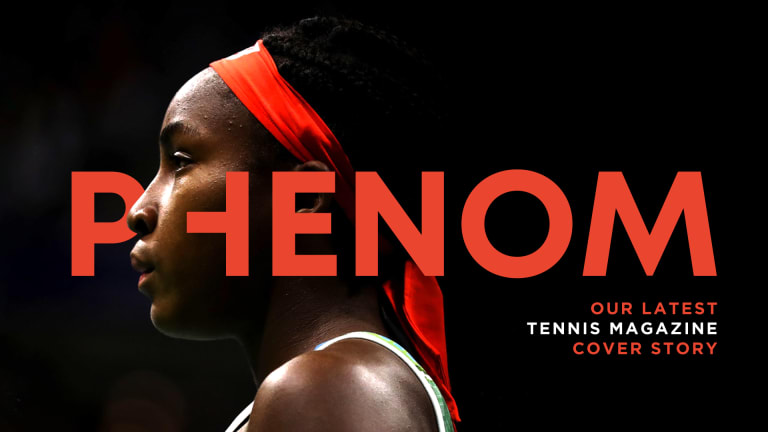
Phenom: How did Coco Gauff get so good so fast?
Advertising
It was Arthur Ashe Kids’ Day at the 2019 US Open, and the hundreds of noisy young New Yorkers who had gathered in Louis Armstrong Stadium watched intently as a girl not much older than they were, 15-year-old Coco Gauff, walked on court with a smile and a wave.
Three girls darted down to the front row and leaned as far into the playing area as they could; they seemed most impressed by Gauff’s immaculaate green nail polish. Other children stood, cradling oversize tennis balls, and waited patiently for an autograph. Some beat the plastic Thunderstix that were handed out for the festivities. Others called out “Co-co!” Some waved in her direction as if she were an old friend. But when Gauff eased her long limbs to the left side of the court and blistered a backhand down the line, everyone in the arena—child and parent alike—made the same sound at once: “Ooooohhhh!!!”
That awed roar was a good summation of Gauff’s summer as a whole. It was a wow from start to finish; or, as Coco might say, it was “amazing” and “super shocking.”
In June, the Atlanta native and Florida resident was a promising junior; by Labor Day, she was the future of American tennis, and she had leapt to the top of the sports-marketing heap. Team 8, Roger Federer’s agency, represented her. New Balance rolled out an ad campaign, “Call Me Coco,” and designed a striking dress for her to wear at the US Open. Teen Vogue featured her on its cover. Michelle Obama hung out with her. Even Beyoncé’s mother, Tina Knowles-Lawson, professed herself a Coco fan on Instagram.
“I was, like, screaming,” Gauff said about that social-media shout-out. I hope she told her daughter about me.”
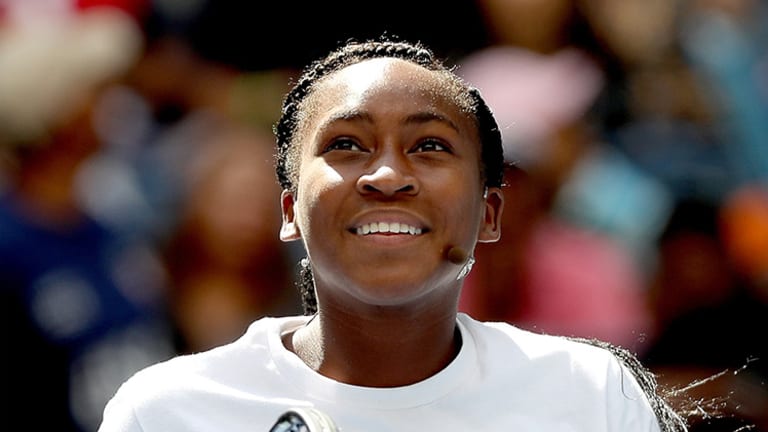
Phenom: How did Coco Gauff get so good so fast?
Advertising
Getty Images
Just as amazing—and more important—was what Gauff did on the court. At Wimbledon, she became the youngest player ever to qualify for the main draw; she upset one of her idols, Venus Williams, in the first round; and she brought the normally demure denizens of Centre Court to their feet with a stirring third-round comeback win.
In August, at D.C.’s Citi Open, Gauff and 17-year-old Caty McNally won the women’s doubles. Christened McCoco, the all-American team also won two matches at the US Open and pulled off the rare feat of filling all 14,000 seats in Armstrong. Gauff herself staged two more stirring singles comebacks on the same court during her third-round run. The lines to get into her matches stretched through the grounds at Flushing Meadows. The chants of “Co-co!” reverberated even farther.
“I think this is my first match where people actually had a chant for me, so that was pretty cool,” Gauff said after her first-round win in Flushing Meadows. She sounded as if she didn’t think it would be the last time.
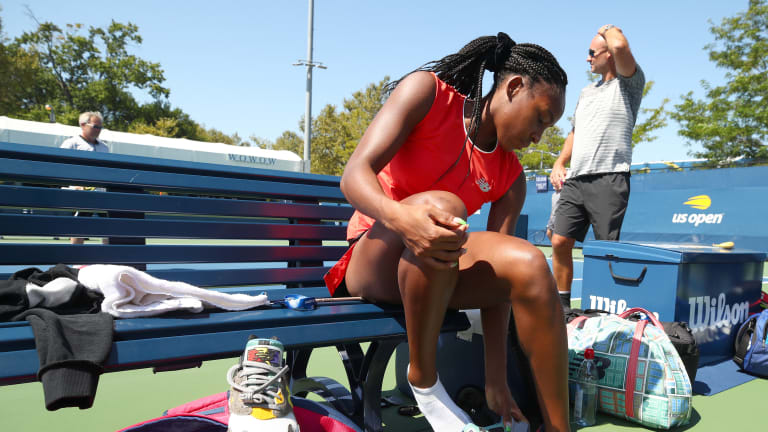
Phenom: How did Coco Gauff get so good so fast?
© Getty Images
Advertising
Gauff, who won’t turn 16 until March, will play a limited pro-tour schedule because of tour rules. “Stepping into the court more,” is what she says she needs to do once she returns to WTA competition. “It’s not like juniors where you have more opportunities in rallies. You have to take them in the pros.” (Getty Images)
What does a teenager do when her dream summer is over? For Gauff, moving on meant decompressing, and reassessing, at home in Delray Beach, a tennis-loving resort town of 70,000 an hour’s drive north of Miami. First, though, the family had to wait in Manhattan for a few days for Hurricane Dorian to clear the Florida coast. It has become a US Open tradition for Gauff; two years ago, after reaching the final of the girls’ event as a 13-year-old, she had to wait for Hurricane Irma to pass.
“This isn’t our first rodeo,” Gauff said.
Gauff says her US Open success was a dream come true, but that she also took it in stride—this wasn’t her first tennis rodeo, either. Within 24 hours, she was back practicing in Delray. As far as how she viewed her game, the Open hadn’t been all that different from other competitions.
"Every tournament is just like a test,” she says. “You see what needs work, and what’s been coming into its own.” For most 15-year-olds, September would mean the start of a new school year. But the studying never stops for Gauff, who is enrolled year-round in a virtual homeschooling program. She says science is her favorite subject, and she has shown an interest in African-American history, posting on Instagram during Juneteenth and Black History Month.
Michelle Obama gave Gauff her autobiography, Becoming, but Coco says she’s waiting to read a copy that doesn’t have the former First Lady’s signature on it. As far as reconnecting with friends, Gauff said she was hoping to get them to watch the horror film It: Chapter II with her, “But some of my friends don’t like scary movies.” Had she gone to the mall, or splurged on anything with her prize money?
“I didn’t go to the mall!” Gauff protested with a laugh. “I don’t really like buying things, actually. I mean, there’s not much I can buy.” One exception, Gauff said at Wimbledon, was a recent hoodie addiction.
My mom, she banned me from buying hoodies for two months,” Gauff told reporters. “Every week I was getting new hoodies sent to the house.”
The statement provided Gauff with an early taste of how tabloids can sensationalize even the most innocent remarks. "TEENAGER REVEALS SHE WILL SPEND £160,000 PRIZE MONEY ON HOODIES," the Daily Mail blared.
Gauff describes herself as “goofy.” She’s a Marvel movie fanatic who tears up when thinks about the demise of Ironman. To relax before matches, she watches makeup tutorials on YouTube.
“She’s just so laid back,” her doubles partner McNally said. “So silly and super easy to get along with.”
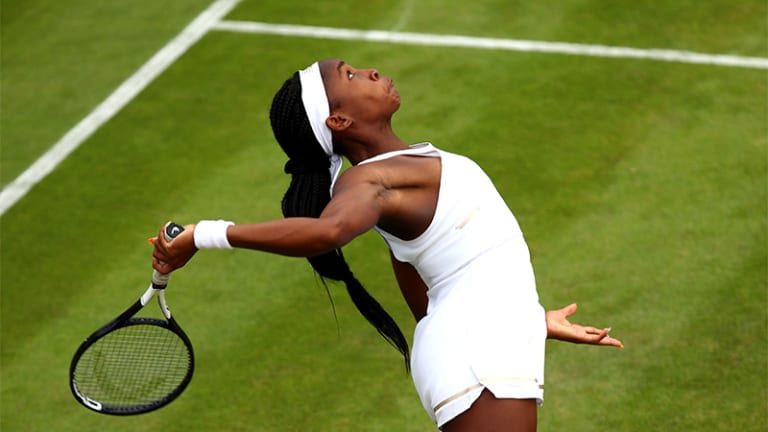
Phenom: How did Coco Gauff get so good so fast?
Advertising
Getty Images
Is this laid-back teen ready to shoulder the dreaded Future of American Tennis label, and the expectations that come with it? That’s where the other, exceptional side of Gauff’s personality, and athletic ability, kicks in.
Gauff’s parents, Corey and Candi, were college athletes. Corey played basketball at Georgia State and Candi ran track at Florida State. Coco’s long, lean build—she’s 5’9”—and splay-footed walk reminds many of a young Venus. But the similarities, it seems, go deeper than appearances.
Thirty years ago, Richard Williams brought Venus to visit veteran coach Rick Macci at his Florida academy. At first, Macci wasn’t sure of her potential. Only when she put down her racquet and began to walk across the court on her hands did he understand what an athlete she was. This year, a clip of Gauff walking across a tennis court on her hands went viral.
But when Corey and Candi introduced their daughter to the sport at age 6, it wasn’t just her athleticism that convinced them to pursue the sport. It was also her mentality.
“One thing we noticed was that she had this unique ability to concentrate for 15 to 20 minutes,” Corey told ESPN.com. “As parents, we decided, ‘Let’s get her good coaching and a lot of feedback.’"
The Gauffs, who were living in Atlanta at the time, moved back to their hometown of Delray. At 8, Gauff won the Little Mo 8-and-Under event. Corey told Coco she was going to be “the greatest,” and she has believed in her ability to become a world-class player ever since.
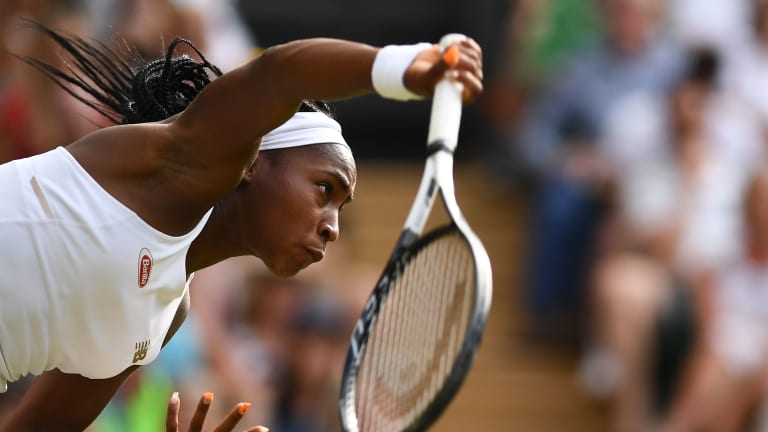
Phenom: How did Coco Gauff get so good so fast?
© AFP/Getty Images
Advertising
Gauff’s backhand is perhaps her best stroke, but she’ll look to improve her serve and forehand, shots that also have the potential to be weapons. “They definitely helped me throughout my game,” Gauff said of the coaches at the Mouratoglou Tennis Academy, where she trains alongside tour-level players. “Helped me with spin and to be more consistent and learn how to play on red clay.” In 2018, Gauff became just the second American to win the Roland Garros girls’ title since Jennifer Capriati, in 1989. (Getty Images)
Another early believer was Serena Williams’ coach, Patrick Mouratoglou. The Gauffs visited his academy when Coco was 10.
“When a young player comes to my academy, I give them a series of tests,” Mouratoglou says. “Technique, speed, practice matches, individual discussions. She scored at the top in everything, especially motivation. Incredible competitor, and someone who believes in herself.”
While Gauff is typically compared to Venus, Mouratoglou sees elements of another champion in her game.
“I think she’s like Novak [Djokovic],” he says. “She has the amazing court coverage, both side to side and up and back, and the acceleration. They’re both consistent, but can also hit winners.”
Gauff trains at Mouratoglou’s academy in two or three-week stretches, alongside young pros like Stefanos Tsitsipas and Alexei Popyrin. But Corey Gauff still handles his daughter’s day-to-day instruction and scheduling. Not surprisingly, balancing the duties of father and coach has had its challenges.
“When I turned, I would say, 12 or 13, we used to argue. He used to be annoying because he would bring tennis home, and he’s always around me,” Coco told the South Florida Sun-Sentinel. “So now we talked, and we understand each other more now.”

Phenom: How did Coco Gauff get so good so fast?
© APA/AFP via Getty Images
Advertising
Getty Images
Whatever they’re doing together, it’s working. So far Coco has shown a precocious knack for making adjustments and thinking her way through matches. She says she hates to practice her slice, but she’s adept at mixing it into rallies, along with high, looping shots and heavy, topspin forehands. That resourcefulness is something Corey has tried to encourage.
“You can’t overcoach,” Corey Gauff told Tennis Channel’s Paul Annacone. “I don’t tell her what to do in every situation. I try to give her the tools to understand, those moments when you walk to the towel, try to understand what your opponent’s doing, and what’s happening, and see what you can do different.”
What has Coco learned from the pros so far?
“It’s important to trust your shots,” says Gauff. “But I think that comes with experience.”
In Mouratoglou’s mind, the key over the next three years will be to improve Gauff’s technique.
“This is the time to do it, while you have the chance,” he says. “Once a player is 18, 19, 20, it’s more difficult to make changes and add shots."

Phenom: How did Coco Gauff get so good so fast?
© AFP/Getty Images
Advertising
It took two of the WTA’s best, Halep and Naomi Osaka, to end Gauff’s runs at Wimbledon (fourth round) and the US Open (third round), respectively. With a 5–2 record in Grand Slams, the 15-year-old had nearly cracked the tour’s Top 100 by mid-September. She’s also ranked just outside the double digits in doubles. (Getty Images)
To date, Gauff’s rise has been meteoric and magical, a fairytale and superhero story rolled into one. Her play this summer reminded many of us of a phenomenon that was once a regular part of tennis: the giddy, gravity-defying innocence of the prodigy.
For the next year or two, though, Gauff’s ascension may be more gradual. To guard against burnout, the WTA limits the number of tournaments players Gauff’s age can enter. Mouratoglou, for one, is not a fan of the rule.
“You learn by competing,” Mouratogolou says. “The rule adds more pressure because you think you have to win every match you get to play.”
If there’s an upside, it’s that the rule may temper people’s expectations of Gauff, at least for the moment. And there is no reason to rush her. In this era of long careers and late-bloomers, it could be 10 years before we know how good she can be. Simona Halep was a junior champ who didn’t win her first major until she was 26. Ashleigh Barty was a prodigy at 16 who quit the sport at 18 and came back to reach No. 1 at 23. Venus is still going at 39.
“I was just telling her, thank you for everything she’s done for the sport,” Gauff said at the end of her match against Venus at Wimbledon. “She’s been an inspiration for many people.”
Venus opened a door for African-American women in tennis that Gauff is stepping through now. Venus couldn’t ask for a better successor, and the children who crowded around Coco at Kids’ Day seem to have found their own role model. It won’t be the last time they see her blister a backhand down the line and go, “Ooooohhhh!”

Phenom: How did Coco Gauff get so good so fast?